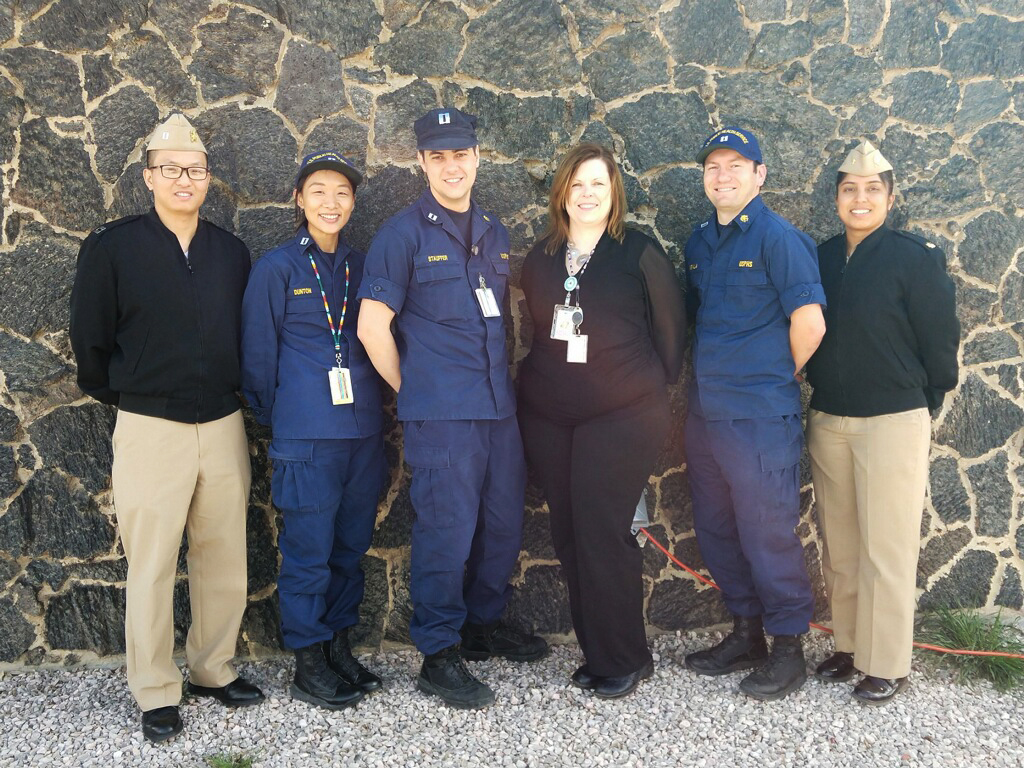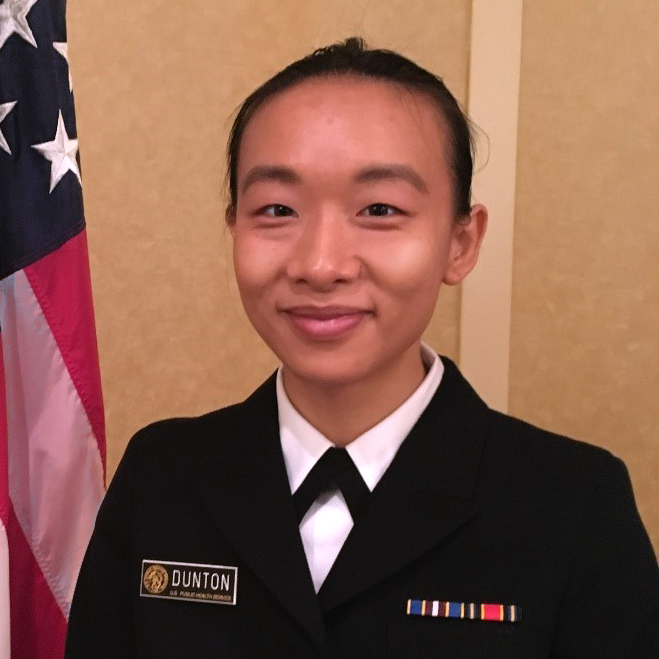
Lt. Cmdr. Phillip O’Bourke, Lt. Catherine Dunton, Dr. Aimee Reinhard, Lt. Drew Nevala, Lt. Khanh Vu, and Lt. Cmdr. Neha Patel
At Gallup Indian Medical Center , pain clinic pharmacists are educating the community about opioid overdose. Trained pharmacists provide voluntary naloxone education to chronic opioid patients, family members, caregivers, and anyone who is interested. GIMC pharmacists also train other health care providers and staff, as well as first responders in the community. Beyond education, both providers and pharmacists under protocol at GIMC still co-prescribe naloxone with opioids for chronic use.
Naloxone is a medication that quickly reverses the effects of opioids in the brain. When someone is experiencing an overdose, naloxone can restore breathing and potentially save a life. The potential benefits of prescribing naloxone along with opioids (often called co-prescribing) may help curb the devastating risks of opioid misuse.
According to the Centers for Disease Control and Prevention, prescription opioids were involved in more than 35% of deaths due to opioid overdose in 2017. Among the American Indian and Alaska Native population, the death rate from opioid overdose increased by 10.8% from 2016 to 2017 due to prescription opioids and a staggering 58.5% from synthetic opioids other than methadone. In a December 19, 2018, press release, the U.S. Department of Health and Human Services recommended prescribing or co-prescribing naloxone with opioids to patients who were deemed at high risk for an opioid overdose. This recommendation was part of the ongoing effort by the HHS to combat the opioid crisis and expand the knowledge on naloxone use.
The practice of co-prescribing naloxone with opioids has been common practice within the GIMC clinics. Pharmacists began co-prescribing naloxone in May 2015. At the end of 2018, 470 patients completed the pharmacist-led naloxone training. Of those trained, 432 patients received naloxone kits to take home, thanks to the current protocol that allows pharmacists to co-prescribe naloxone to patients who are taking opioids, to their family members, or both. Of the naloxone-trained patients, 149 had at least one refill on their naloxone kit, and 112 of those were due to providers or pharmacists under protocol co-prescribing naloxone with their opioid medication.
Naloxone training has also shown to reduce the amount of opioids prescribed at GIMC. Different types of opioids vary in potency, so the CDC has recommended for clinicians to judge how strong opioids are by calculating the amount of morphine it is equal to, also known as morphine milligram equivalents per day. Patients that receive naloxone and training from a pharmacist at GIMC were found to use lower total amounts of morphine. In just a year, the average total daily dose of prescribed opioids decreased by almost 25% from when patients were first trained on naloxone use.
The fight against opioid overdose is not over. GIMC pain clinic pharmacists continue to educate health care providers and staff about naloxone and continue to co-prescribe naloxone kits to patients who are prescribed chronic opioids for pain control.
Related content:



